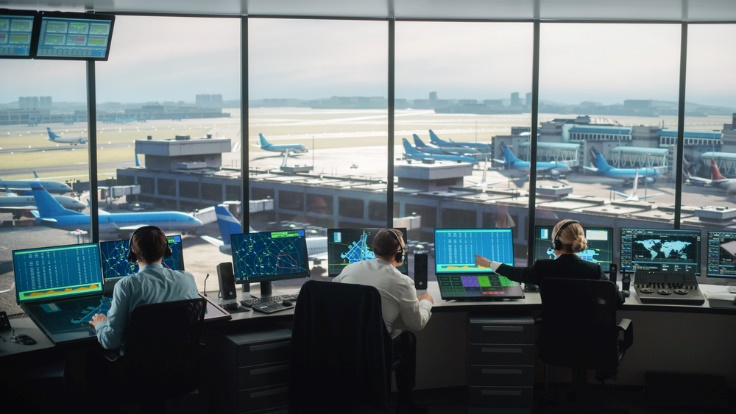The HUCAN project (Holistic Urban Airspace Network Certification), now entering its second year, has made significant progress in addressing the complex certification challenges posed by the increasing use of automation in aviation. As part of SESAR JU’s efforts to ensure the safe and efficient integration of advanced technologies into ATM, HUCAN is pioneering innovative methodologies for certifying both airborne and ground-based systems, many of which incorporate AI-powered automation.
During the review meeting held at SESAR JU’s headquarters in Brussels at the end of September 2024, Project Manager Paola Lanzi (Deep Blue) presented a detailed overview of the project’s achievements during its first year of activity. Among the key accomplishments were the successful mapping of the regulatory landscape within the EU’s digital strategy for mobility and ATM, and a comprehensive review of the existing certification frameworks for highly automated and autonomous technologies in aviation. These milestones have laid the groundwork for HUCAN’s second phase, which will focus on developing a holistic approach to certifying automated systems and creating preliminary guidelines and tools to support their implementation.
Collaboration with key stakeholders has been integral to the project’s success thus far. The involvement of the EASA, which has been closely engaged with HUCAN, has ensured that the project’s outcomes are aligned with regulatory advancements. A meeting already scheduled with EASA experts will further define EASA’s contribution to the project and explore how HUCAN’s findings can inform the ongoing AI Roadmap 2.0.
HUCAN’s first year has also seen the completion of a systematic review of trends in advanced automation, as well as an in-depth analysis of the legal and regulatory requirements for certifying automated systems. In parallel, the project has successfully established a Stakeholder Consultation Group, bringing together many SESAR JU-funded projects to ensure that the research remains grounded in practical needs. A dedicated workshop further aligned the project’s objectives with the broader needs of the aviation sector, providing valuable insights into the challenges and opportunities associated with high levels of automation.
In addition, the project has made significant strides in risk management, with the mitigation of key risks related to industry engagement and the development of use cases. The project’s risk levels have been progressively reduced as more tangible results have emerged, underscoring the effectiveness of HUCAN’s careful planning and stakeholder collaboration.
A key highlight of the September review meeting was the presentation of the intermediate results achieved in Work Package 4, led by NLR, which focuses on creating a unified certification approach for highly automated air traffic management systems. These results, which were formally approved by SESAR, represent a major step forward in ensuring that the systems of the future meet the highest safety and regulatory standards. The initial experiments have demonstrated the potential for integrating highly automated technologies into air traffic control, while maintaining the rigorous safety standards required by the aviation industry.
As HUCAN moves into its second phase, the project will concentrate on further refining these solutions. This includes validating a toolkit designed to support the certification of automated systems and developing a set of guidelines that will help regulators and industry stakeholders adapt to future changes in airspace management. The upcoming months will be crucial for consolidating the research findings and translating them into practical methodologies that can be used across the sector.
In parallel, the project will continue to collaborate with other SESAR initiatives, like Engage 2, and will present its findings at high-profile events, such as the 2024 SESAR Innovation Days in Rome. These activities will not only provide HUCAN with valuable feedback but will also foster synergies with other projects exploring the future of aviation.
Looking ahead, the project remains focused on shaping the future of automated air traffic systems in Europe. SESAR JU Programme Manager, Oznur Uygur, emphasised the importance of this work, noting:
As HUCAN continues to evolve, we are making substantial progress in addressing the certification challenges tied to highly automated technologies in aviation. Our team is developing the initial innovative approaches and methodologies for the approval and certification of these systems, aiming to ensure that they align with both current regulatory frameworks and the future needs of a rapidly changing airspace. A key insight so far is the importance of balancing innovation with robust safety standards, ensuring that automation systems are trusted, certified, and seamlessly integrated into air traffic management.
With its focus on maintaining safety and fostering innovation, HUCAN is well-positioned to help pave the way for the next generation of automated air traffic systems, ensuring that Europe remains at the forefront of aviation technology.

